Disclosure: This article contains affiliate links. We may earn a commission from purchases at no extra cost to you, which helps our travel content.
The morning call to prayer from a nearby mosque mingles with the scent of fresh jalebi and the distant honking of auto rickshaws as Delhi awakens. This sensory symphony is familiar yet different from the one I experienced as a child visiting my father's relatives in Kerala. Delhi—a metropolis where centuries of history layer upon each other like geological strata—offers far more than the glossy brochure experiences most visitors settle for. After two decades covering cricket matches across India, I've developed an intimate relationship with this complex capital, one that transcends the well-worn tourist circuit. This winter, my fifth visit to Delhi since relocating to Wellington, revealed new dimensions of a city I thought I knew well. For couples seeking authentic connections rather than checkbox tourism, Delhi rewards those willing to step beyond the obvious and engage with its living cultural tapestry.
The Artisan Quarters: Craftsmanship Beyond Souvenirs
Most visitors to Delhi satisfy their shopping urges in the tourist-friendly confines of Dilli Haat or Janpath Market. While these offer convenience, they barely scratch the surface of Delhi's rich artisanal traditions. Instead, venture into the labyrinthine lanes of Old Delhi's Chawri Bazar, where sixth-generation craftsmen still practice traditional metalwork.
On my recent visit with my longtime friend Vikram, a local sports photographer, we spent an afternoon with Mohammad Salim, whose family has crafted intricate brass items since the Mughal era. In his modest workshop—little more than a 10×12 room with tools that appear centuries old—Salim demonstrated techniques passed down through generations. The rhythmic tapping of his hammer against brass reminded me of the steady drumbeat at cricket matches, both sounds representing timeless traditions.
"Many tourists want quick purchases," Salim told us while shaping a brass water vessel. "But understanding our craft requires time—like understanding a good test match."
Nearby in Nai Sarak, traditional bookbinders still create handmade journals using techniques dating back hundreds of years. I purchased a leather-bound notebook with handmade paper that has become my primary travel journal, superior to any travel journal I've used previously.
The key to these experiences isn't just visiting workshops but engaging with artisans. Ask questions about their families, their training, how their craft has evolved. Most are delighted to share their stories when approached with genuine interest rather than transactional tourism.

💡 Pro Tips
- Visit workshops during mid-morning (10-11am) when artisans are less busy and more willing to demonstrate their craft
- Learn a few Hindi phrases beyond basic greetings—craftspeople appreciate the effort
- Purchase directly from artisans rather than resellers to ensure fair compensation
Dawn Heritage Walks: The City Before Tourism Wakes
Delhi reveals its most authentic self in those liminal hours before the tourist buses arrive. For years, I've made it a ritual to rise before dawn during my Delhi visits—a habit formed during early morning cricket practice sessions in my youth. The city at 5:30 AM offers experiences impossible to find in guidebooks.
Jama Masjid, often crowded with tourists by mid-morning, transforms into a genuinely spiritual space during the first prayer of the day. As a respectful observer (non-Muslims cannot enter during prayer times), watching devotees gather in the soft pre-dawn light offers insights into Delhi's living Islamic heritage impossible to glean during peak hours.
For a different perspective, the banks of the Yamuna River near the Signature Bridge provide a glimpse into traditional wrestling culture. Here, wrestlers train in earthen pits called akharas, maintaining a tradition dating back centuries. As a sports journalist, I've found these wrestlers extraordinarily welcoming when approached with respect and genuine curiosity.
"The discipline of kushti is not just about physical strength but spiritual development," explained Ravi Dahiya, a veteran wrestler who welcomed me to observe morning training. "We preserve a way of life that connects us to our ancestors."
Navigating pre-dawn Delhi requires preparation. I rely on my headlamp for the dimly lit alleyways and a good offline map application. Arrange transportation in advance—pre-dawn auto rickshaws are scarce, and rideshare services less reliable in the early hours.

💡 Pro Tips
- Dress modestly and appropriately for religious sites—women should bring a scarf for covering heads near mosques
- Carry small denominations of cash for chai wallahs and street food vendors who operate during early hours
- Learn the correct pronunciations of destinations to communicate effectively with drivers who may speak limited English
Culinary Anthropology: Beyond Butter Chicken
Delhi's food scene suffers from a curious paradox—while justly famous for its cuisine, most visitors experience only a sanitized version of its culinary heritage. The butter chicken and dal makhani served in hotel restaurants bear little resemblance to the vibrant street food traditions that form the backbone of Delhi's food culture.
My approach to Delhi's cuisine draws from my journalistic background—I seek the stories behind the food. Rather than focusing solely on what to eat, I'm interested in who makes it and why. This winter, I spent several evenings in the company of Purani Delhi's nihari makers, whose slow-cooked meat stew represents a culinary tradition dating back to the Mughal era.
At Karim's near Jama Masjid, I arrived not at dinner time but at 4 AM to watch the preparation process. The third-generation chef, Salauddin, explained how their nihari simmers for at least 12 hours before serving. "This is not fast food," he laughed. "This is slow food with history in every bite."
For vegetarians, the paratha traditions of Gali Paranthe Wali in Chandni Chowk offer similar depth. These stuffed flatbreads come with histories as rich as their fillings. Some shops trace their lineage back six generations, with recipes jealously guarded as family treasures.
To truly experience Delhi's food culture, consider a food tour with a knowledgeable local guide. While I generally avoid organized tours, food exploration benefits from local expertise, particularly regarding hygiene and hidden gems. My recommendation is to book with smaller, locally-owned operations rather than international tour companies—their connections to neighborhood vendors are invaluable.

💡 Pro Tips
- Carry your own water bottle and hand sanitizer, but don't let hygiene concerns prevent you from trying street food from busy, popular vendors
- Ask locals (hotel staff, shopkeepers) where they eat—not where tourists should eat
- Look for establishments with multigenerational history; they've survived by maintaining quality
Haveli Homestays: Living Heritage
The difference between visiting Delhi and experiencing Delhi often comes down to where you stay. While international hotel chains offer predictable comfort, they isolate travelers from the city's rhythms. For couples seeking deeper connections, I recommend heritage haveli homestays—traditional mansions converted into boutique accommodations.
During my recent visit, I stayed at Haveli Dharampura in Old Delhi, a painstakingly restored 19th-century merchant's home. Unlike hotels where interactions with staff follow scripted hospitality protocols, haveli stays offer genuine cultural exchange. Owners often join guests for breakfast, sharing stories and recommendations impossible to find in guidebooks.
"We don't just offer rooms; we offer a glimpse into how Delhi families have lived for generations," explained Anil Pershad, whose family has owned their haveli for seven generations.
The architecture itself tells stories—from the jharokha (overhanging enclosed balconies) designed for women to observe street life while maintaining privacy, to the internal courtyards that create natural cooling systems. These features represent indigenous climate adaptation strategies developed centuries before air conditioning.
For couples, these havelis offer romantic settings without contrived commercialism. Imagine sipping evening chai on a rooftop terrace as the call to prayer sounds across the old city while the setting sun gilds ancient domes and minarets. These moments of connection—both with each other and with Delhi's living heritage—become the souvenirs that outlast any market purchase.
Pack light, comfortable clothing and a travel adapter with surge protection, as some heritage buildings have limited outlets and older electrical systems. Most importantly, bring an open mind—haveli stays often mean adapting to architectural quirks and neighborhood sounds that are part of the authentic experience.

💡 Pro Tips
- Book havelis directly through their websites rather than major booking platforms to ensure better rates and room selection
- Request rooms facing internal courtyards rather than streets for quieter nights
- Ask haveli owners about neighborhood walking routes that showcase local life beyond tourist areas
Ecological Delhi: Urban Wilderness Connections
While Delhi's cultural heritage rightfully commands attention, the city's ecological dimensions remain largely unexplored by visitors. My wife's conservation work has heightened my awareness of urban ecosystems, revealing another layer of Delhi's identity beyond monuments and markets.
The Yamuna Biodiversity Park represents an ambitious ecological restoration project transforming degraded land into thriving habitat. During winter mornings, the park becomes a haven for migratory birds—I counted 27 species during a single dawn visit this January. For couples seeking respite from urban intensity, these regenerated wetlands offer both tranquility and hope for environmental renewal.
Sanjay Van, a sprawling city forest near Qutub Minar, provides another green counterpoint to Delhi's concrete expansion. Walking these trails with my binoculars revealed nilgai antelope, jackals, and numerous bird species thriving within city limits. These experiences connect visitors to Delhi's pre-urban landscape and the ongoing relationship between the city and its natural foundation.
"Many visitors see only Delhi's pollution and crowding," noted Faiyaz Khudsar, scientist-in-charge at Yamuna Biodiversity Park. "But understanding Delhi means recognizing how natural systems persist despite urbanization—and how traditional ecological knowledge informed historical city planning."
The ancient step wells (baolis) scattered throughout Delhi demonstrate historical water conservation systems developed centuries ago. Agrasen ki Baoli near Connaught Place illustrates how past generations managed resources in a semi-arid landscape—knowledge increasingly relevant as climate change intensifies water scarcity.
For couples interested in sustainability, these sites offer inspiration beyond typical tourism. They demonstrate how cultural heritage and ecological awareness intertwine in living urban systems.

💡 Pro Tips
- Visit ecological sites early morning (6-8am) when wildlife is most active and before urban noise intensifies
- Bring binoculars and a field guide to Indian birds—even non-birders find identification surprisingly engaging
- Support conservation efforts by hiring local ecological guides rather than general tour operators
Final Thoughts
Delhi defies simple narratives—it's neither the chaotic nightmare portrayed in some travel accounts nor the exotic wonderland of others. It's a complex, living metropolis where multiple centuries coexist and where cultural traditions evolve rather than calcify. For couples willing to engage beyond surface experiences, Delhi offers profound connections to both history and contemporary Indian life. The most meaningful experiences often come through relationships—with artisans, with haveli owners, with local guides who become friends rather than service providers. My journalist's instinct has always been to look beyond official stories, and Delhi rewards this approach abundantly. As you plan your journey, remember that the most authentic experiences rarely appear in guidebooks or Instagram feeds. They emerge through curiosity, patience, and willingness to embrace the unexpected rhythms of this extraordinary city.
✨ Key Takeaways
- Authentic Delhi experiences come through personal connections with locals rather than checklist tourism
- Early mornings reveal dimensions of the city impossible to experience during conventional tourist hours
- Heritage accommodations provide cultural context impossible to gain from international hotels
- Understanding Delhi's ecological dimensions adds depth to cultural experiences
📋 Practical Information
Best Time to Visit
November through February (winter)
Budget Estimate
$75-150 per day per couple (excluding flights)
Recommended Duration
Minimum 5 days, ideally 7-10 days
Difficulty Level
Moderate
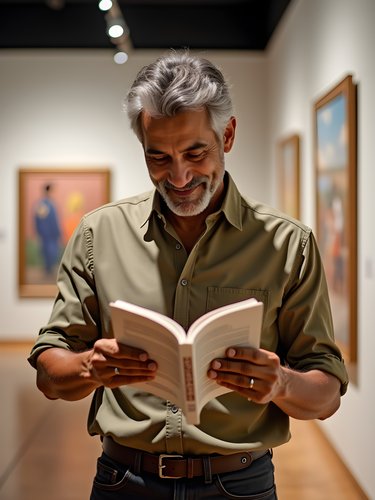
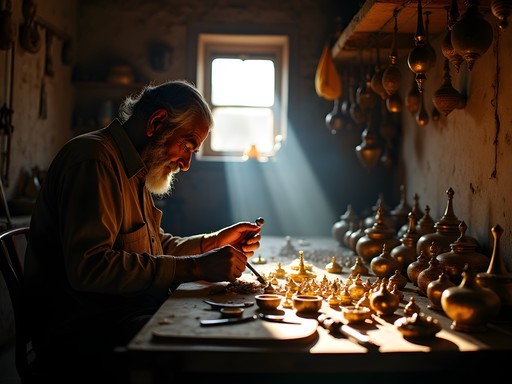






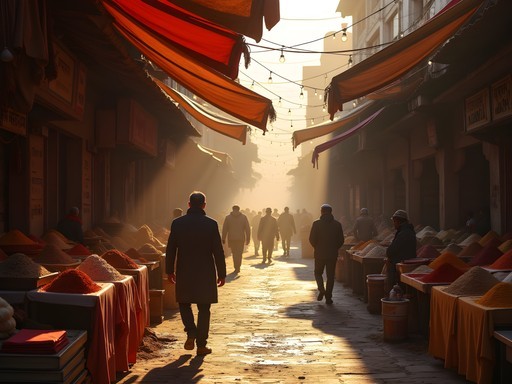
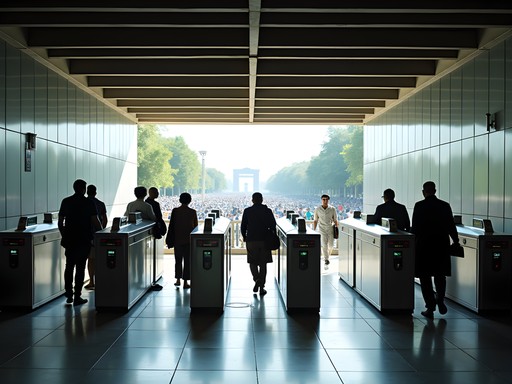

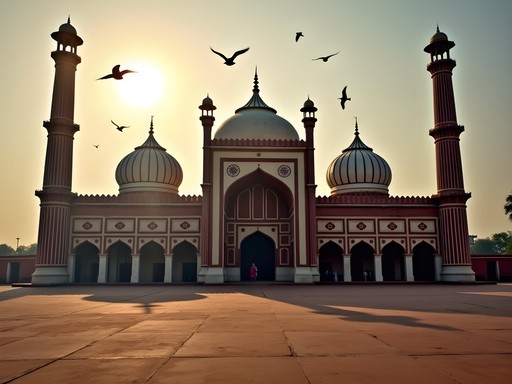
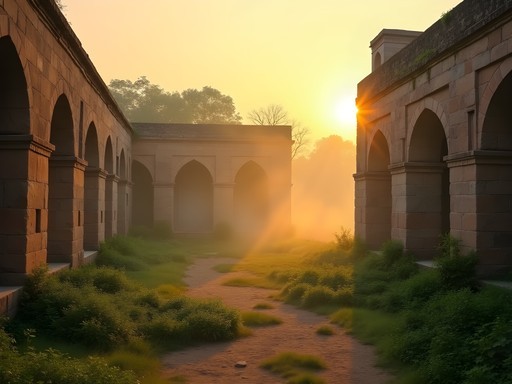

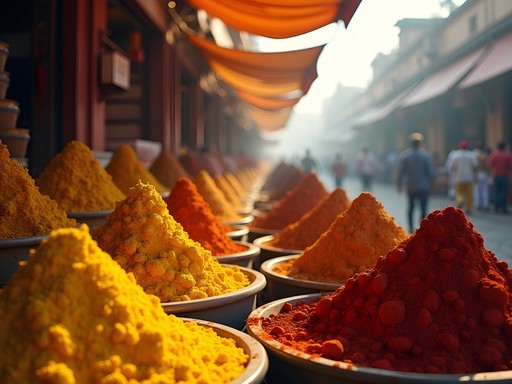

Comments
Sarah Powell
Amit, this is such a thoughtful analysis of Delhi's cultural landscape. What particularly resonated with me was your observation about the city defying simple narratives. I've visited three times and each experience revealed new layers. The haveli homestay recommendation is spot-on - I stayed in one near Chandni Chowk where the family had preserved architectural details from the 1890s while tastefully modernizing amenities. One thing I'd add: Delhi's public transportation system is remarkably efficient. The metro connects many heritage areas and using it provides another lens into local life. The women-only cars during rush hour were particularly interesting from an anthropological perspective.
journeyace3032
Did you need a special card for the metro or can tourists just buy tickets easily?
Sarah Powell
You can buy single tokens or a tourist card valid for 1-3 days. Super easy! Just avoid rush hour when you're first trying it.
journeyace3032
Love this! Delhi has so much more than just the touristy spots. The food section made me hungry lol
beachguy
This is exactly the Delhi I experienced last year! Those heritage walks at dawn are magical - hardly any tourists and the locals are so friendly. We stayed in a haveli in Old Delhi and the family taught us how to make proper chai. Way better than those cookie-cutter hotel experiences. The artisan quarter tip is gold - bought some incredible textiles directly from the makers.
Sarah Powell
Did you feel safe during the dawn walks? I'm planning a solo trip and wondering about early morning safety in Delhi.
beachguy
Totally safe! There were actually lots of locals out - morning exercises in parks, people heading to work, food vendors setting up. I'd recommend joining a small group walk your first time just to get oriented. The guide we had carried a pocket guidebook which was super helpful for context.
exploremaster
Great post! How did you find those dawn heritage walks? Are they organized tours or did you just explore on your own? Going to Delhi in October and would love to try this.
Amit Sullivan
Thanks for asking! I joined Delhi Heritage Walks - they have a 6am Old Delhi tour that starts at Jama Masjid. Book ahead as they keep groups small. If you prefer solo, start at Red Fort around 5:30am and follow the spice market smells. Just be back at Karim's when they open for breakfast!
exploremaster
Perfect, thanks! Will definitely check out Karim's too.
Nicole Russell
Amit, your writing captures Delhi's essence perfectly! I visited last year and discovered the artisan quarters in Karol Bagh by accident. Ended up spending a whole day watching a family of zardozi embroiderers work on wedding saris. They invited me for chai and showed me pieces they'd made for Bollywood films! One tip for other solo travelers: I found the audio walks super helpful for exploring neighborhoods like Hauz Khas and Mehrauli where guides are less common. The metro is incredibly easy to use too - just avoid rush hour!
exploremaster
Is Delhi safe for solo female travelers? Heard mixed things but your experience sounds positive.
Nicole Russell
I felt safe in most areas, but I was careful - used Uber instead of regular taxis at night, dressed conservatively, and stayed aware of my surroundings. The metro has women-only cars which I used during busy times. Common sense goes a long way!
travelmate
Just got back from Delhi last month and this post is spot on! Those heritage walks at dawn are magical - we did the Old Delhi one and had the narrow lanes almost to ourselves. The homestay tip is gold too. We stayed in a haveli in Nizamuddin and the family taught us how to make proper chai. Way better experience than our hotel in Connaught Place.
Nicole Russell
Which haveli did you stay at? I'm planning a trip for November and would love recommendations!
travelmate
We stayed at Sham Nath Villa. Family-run place with amazing breakfast. The owner Mr. Sharma knows everyone in the neighborhood and arranged a special visit to a local dhrupad musician's practice session. Unforgettable!
explorediver
Love this post! I'm heading to Delhi next month and definitely want to try one of those dawn heritage walks. Any specific companies/guides you'd recommend? Also curious about safety as a solo female traveler in the artisan quarters you mentioned.
Amit Sullivan
Delhi Heritage Walks and Delhi By Foot both offer excellent dawn tours. For safety, the artisan quarters are generally fine during daylight hours - I'd recommend joining a small group tour for your first visit, then you'll feel comfortable returning solo. Chandni Chowk and Daryaganj areas are particularly interesting for crafts.
skyadventurer
I second Delhi Heritage Walks! Their guides are mostly local history students - super knowledgeable. As a solo female traveler I felt completely comfortable with them.
Haley Hamilton
Amit, your section on culinary anthropology spoke to my SOUL! On my third trip to Delhi last spring, I finally ventured beyond the usual spots and discovered a tiny place in Nizamuddin where an elderly gentleman has been making nihari the same way for 40+ years. The experience of sitting cross-legged on floor mats while he explained each spice was worth more than any fancy restaurant meal. I've found that carrying a food journal helps me document these culinary discoveries. Your tip about asking locals where THEY eat rather than where tourists should eat is golden advice I follow religiously now.
explorediver
Haley, that nihari place sounds amazing! Can you share the name or location? Heading to Delhi in November.
Haley Hamilton
It's called Karim's Nihari - not the famous chain, but a tiny spot near the dargah. Ask any local in Nizamuddin West, they'll point you there. Go early (7-8am) for the best experience!
skyadventurer
This is exactly the Delhi I experienced last year! Those heritage walks at dawn are magical - the light hitting Jama Masjid as vendors set up for the day is something I'll never forget. We stayed in a haveli in Old Delhi and it completely transformed our experience. The family taught us how to make proper chai and introduced us to neighbors who'd lived there for generations. So much better than the hotel district!
Amit Sullivan
So glad it resonated with your experience! Which haveli did you stay in? I'm always looking to add more recommendations to my list.
skyadventurer
We stayed at Haveli Dharampura - not the cheapest option but worth every rupee for the rooftop views alone!
Savannah Torres
This brought back so many memories of our family trip to Delhi! My kids still talk about the morning we spent with a puppet maker in the artisan quarter. The gentleman had been making kathputli puppets for 40+ years and let my children try painting some faces. What made it special was that we weren't in some tourist demonstration - just a workshop where real craftsmanship happens daily. One tip I'd add to Amit's excellent guide: use the Delhi metro! It's clean, efficient, and gives you a glimpse into everyday life. My 7-year-old was fascinated by how people from all walks of life use it together. Just avoid rush hours if traveling with kids or claustrophobia issues.
Venture X
Premium card with 2X miles, $300 travel credit, Priority Pass